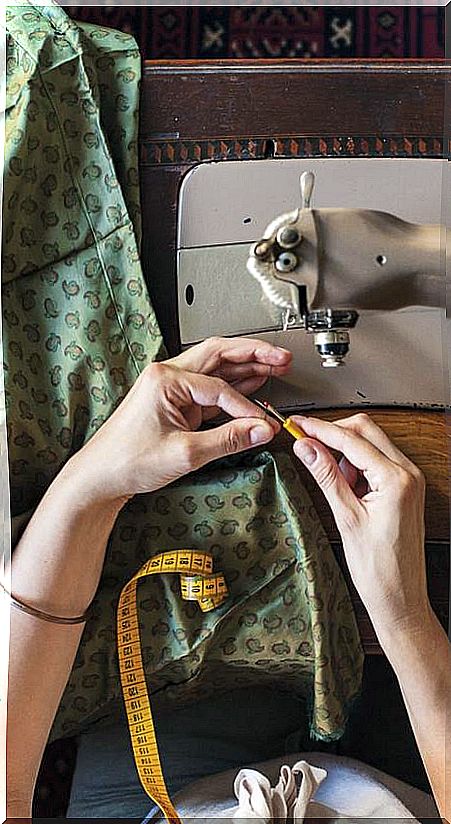The 11 Fashion Challenges After The Pandemic
The COVID-19 pandemic has changed many things, including fashion. Consumers want brands that are more committed to social justice and the health of the planet.

We have been confined with almost the same clothing for several months, without missing having more clothes, and the mask has become the “garment of the season”, even the garment of the year 2020. But how is the pandemic influencing to the fashion industry? What will the next fashion be like?
During the confinement, confined at home, and with the stores closed, we have been able to observe how the sector manufactured and donated masks, among other gestures of solidarity, while globalized textile production chains were paralyzed with defaults and dismissals, splashing the reputation of some large companies. brands.
The #PayUp?
Due to the pandemic, many fashion brands worldwide have had to stop their production and many companies have decided not to pay their suppliers. The problem was raised by the Workers Right Consortium, an organization that supports the rights of textile workers. They published a list of brands that have acted responsibly by paying their suppliers and those that have not.
The hashtag #PayUp was created by this organization for brands to commit to paying off debts. The movement went viral in such a way that it has managed to put pressure on brands such as Target, Levi’s, Ralph Lauren and Gap, which have promised to pay what they owe.
However, Workers Right Consortium clarifies that it is not only necessary to pay the orders carried out, but also to guarantee workers jobs and wages in times of uncertainty such as the ones we are experiencing. They ask companies to ensure a minimum of production and wages to factories in case sales slow down again.
How fashion is going to change
Already in the “new normal” shopping is not what it was with capacity limitations, social distance or the apprehension of getting infected. Furthermore, after the hiatus, the fashion industry has no choice but to pay attention to these crucial issues that have emerged (or were always there), but are more relevant today than ever to the economic recovery. All things considered, the fashion industry has a number of challenges ahead.
- Production must be relocated: the health crisis has revealed that having globalized and outsourced production chains makes us more vulnerable and dependent on voracious markets, price speculation and commission agents. For this reason, some companies and production chains of essential goods (sanitary equipment, masks, etc.) are considering re-manufacturing (even partially) in Europe, or Spain, for greater security in supply. This could also have a positive impact on national employment and reduce emissions from intercontinental transport.
- More social responsibility: consumers are now more sensitive to supporting companies that create jobs and demonstrate their real social commitment with their consumption. They also feel more rejection towards socialwashing, the social facelift to improve their reputation that is not true to their business reality. It is an intergenerational feeling, although millennials and Generation Z are increasingly critical and demanding, they vote and punish more with their wallets, they are more informed and more easily find information online about brands and alternatives.
- With environmental commitment: fashion manufactures 80 to 150 billion garments per year. And apparel and footwear are expected to grow globally 81%, to 102 million tonnes by 2030, according to the Global Fashion Agenda. The sector’s emissions will rise a further 50%, according to the United Nations Environment Program. To this must be added the environmental deterioration caused by being one of the most polluting and resource-demanding industries (water, energy, raw materials, etc.). With an environmental sensitivity more deeply rooted in society, and especially in the new generations, demonstrating real practices to minimize the ecological impact (using sustainable fabrics, implementing more respectful processes, eliminating toxins, etc.) will gain importance in front of the consumer to the time to buy.
- Think more in the long term: experts are beginning to talk about “post-growth”, that is, rethinking the consumption and production model within planetary limits, because we are consuming and producing above the planet’s capacity to renew itself ( 1.7 lands in land resources per year, in 2030 there will be two, and in 2050 three). The solution is to produce less and more sustainably. For this reason, designers with environmental sensitivity such as Vivienne Westwood have been reducing their ready-to-wear in recent years: in the case of this designer, by 37%, bags by 55% and shoes by 58%, while integrating more responsible practices.
- Reinventing the catwalks and the seasons: Gucci and other brands asked to “turn off” the fashion calendar. The British Fashion Council and the Council of Fashion Designers of America launched a message on the need to reduce overproduction. Dries Van Noten also headed a letter with other designers and fashion executives asking to rethink the shows. For their part, Alexander Wang, Giorgio Armani, Gucci, Michael Kors or Burberry, among others, will present the new lines at their own pace. Social networks and digital media are positioned as the new global showcases and catwalks where to show the creations with less emissions and impact. In London, in June, the first fully digital catwalk was already produced.
- Value the second hand: after having created a multitude of garments that cannot be sold, and with a new economic crisis on top of it, the second hand is emerging as an accessible and sustainable fashion option, observing sanitary measures. So if the broader retail segment of stores is estimated to shrink by 23% this year (partly due to COVID-19), second-hand online stores will grow 27%. And in the next five years they will do so by 414%, according to the Resale report from the American portal ThredUp.
- Take into account the opinion of consumers: Brands use social networks to detect the real concerns of consumers. Furthermore, they are aware that the democratization of public communication lends itself to social activism. For this reason, they redouble their efforts to retain the public with strategies that explore microforums, private groups and micro-communities, to reach out in a more direct, empathetic and close way with their messages and products.
- Eliminate discrimination: George Lloyd’s death from police violence during the pandemic in the United States has sparked a movement on Instagram with the hashtag #PullUpOrShutUp. Launched on June 3, this movement has already convinced 200 companies – some trendy, like Levi’s – to be more transparent about their employees of color and to commit more to racial justice. Achieving true racial justice in fashion companies means committing to it exists and is tangible throughout your supply chain, among your store or warehouse employees, and at your management.
- More functionality: As in all economic crises, fashion tends to create more imperishable, wearable, timeless and durable designs. In addition, clothing for teleworking and sportswear are on the rise due to the need for comfort, because now we socialize less and spend more time at home. In addition, the current context increases in consumers an interest in personal health and well-being, both physical and mental.
- Another way to buy: if we have noticed something during confinement, it is that what we have missed the most has not been consuming, but friends, family or nature. It is necessary to buy with more awareness. Slow shopping has been promoting for years to buy only what is needed quietly and sustainably. On the other hand, physical stores are going to be reduced in favor of digital ones.









